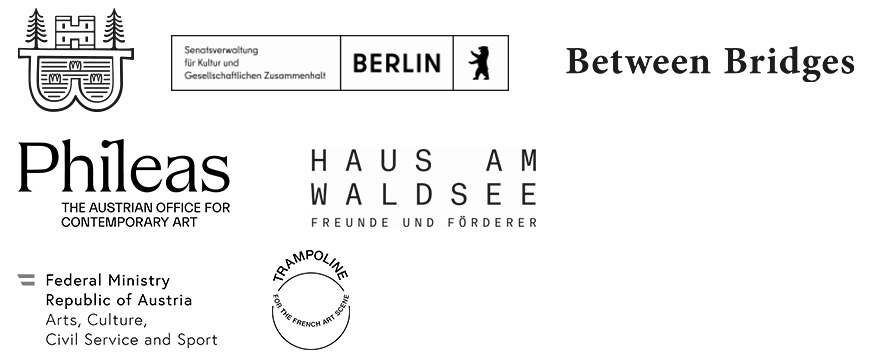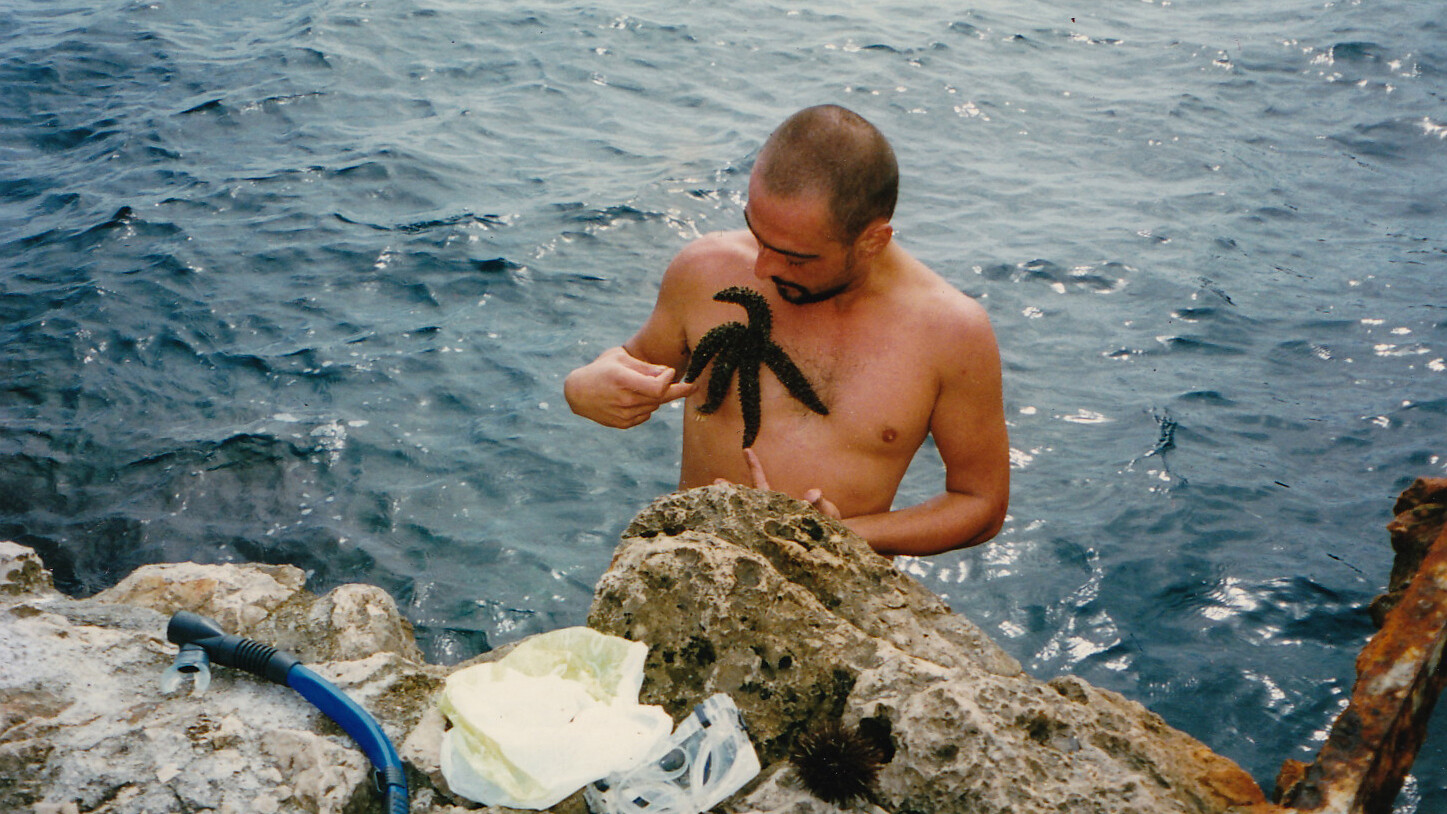October 20, 2023–January 14, 2024
Argentinische Allee 30
14163 Berlin
Germany
Hours: Tuesday–Sunday 11am–6pm
A photograph captures Bruno Pélassy, freshly emerged from the deep blue of Nice’s Coco Beach, wearing a starfish like a living brooch on his chest, consigning him to some secret maritime order. “The blurred distinction between plant and animal that exists so obviously in the sea, as if it offered a perfect metaphor for the philosophical limits of all binary distinctions: good and evil, male and female, night and day, black and white.” [1], cast a deep fascination on the artist, as Laura Cottingham, curator and close confidante, recalls. It is exactly this dissolution of binaries that is at the heart of Pélassy’s artistic practice.
Bruno Pélassy and the Order of the Starfish is the French artist’s first institutional exhibition in Germany. Pélassy was born in 1966 in Vientiane, Laos, and died in 2002 in Nice at the age of thirty-six. His eccentric, subversive, and at the same time extremely sensual oeuvre rubs shoulders with selected works by other artists. The group exhibition presents contributions by Marc Camille Chaimowicz, Beth Collar, Jesse Darling, Brice Dellsperger, Leonor Fini, Ull Hohn, Natacha Lesueur, Jean Painlevé & Geneviève Hamon, James Richards as well as Soshiro Matsubara, who also devised the exhibition’s architecture.
Throughout his life, Pélassy embodied a dazzling and multifaceted persona, as a crossover artist whose work defies easy categorisation. He painted, drew, performed, created sculptures, films, couture, and jewellery. Formal and playful material excesses tend to blur disciplinary boundaries, making it challenging to separate his artistic endeavours from his approach to daily existence. Pélassy was a rampant collector; and it was the very things that others seemed to no longer have any use for that attracted him the most: faded fabrics from various countries, jewellery, books, and toys, as well as records, and old VHS tapes.
The techniques of collaging, sewing, separating, and connecting are deeply embedded in his work process and testify to his studies as a textile and jewellery designer. They enabled him to continually re-adapt reality to his needs and to create formulas for what he felt did not fit. He relied on the combination of different techniques, processes, and materials which he borrowed from both the realms of haute couture and the second-hand culture of a throwaway society, thus combining high-quality production methods with the use of cheap as well as everyday materials. Simple pencil drawings were as integral to Pélassy’s practice as the meticulous crafting of glass and crystal, along with the creation of jewellery or reliquary-like objects.
Significantly shaped by an early diagnosis of HIV at the age of twenty-one, Pélassy’s work ponders the ambivalent poetics of illness, infection, and death. He perceived the body as a porous and erratic entity that was simultaneously deeply interwoven with its environment. His practice can be considered a personal and political engagement with the norms of desire, nature, gender, social values, and health, as well as a plea for the dissolution of rigid binaries.
The group show interacts with Pélassy’s work at various points. The exhibition architecture by Japanese artist Soshiro Matsubara, consisting of labyrinthine fixtures, wall hangings, mirrors, carpets, and a wide variety of Mannerist ceramics and lamps, forms the basis for this exchange. The urgency and relevance of Pélassy’s inquiries in relation to contemporary concerns become apparent through the direct juxtaposition of and interaction between each of the works in the exhibition spaces. In dialogue with Pélassy, the group presentation reflects on the malleability of the body, its transitoriness, as well as on a failing political system in which illness has come to be read as an indicator of social power relations.
Pélassy’s multifaceted body of work has been showcased in internationally acclaimed solo exhibitions, most recently at 55 Walker Street, New York (2018); Flat Time House, London, and MAMCO, Geneva (both 2016), as well as at Crédac, Ivry-sur-Seine; Passerelle Centre d’art contemporain, Brest, and Air de Paris, Paris (all 2015). Pélassy’s work has also been part of numerous group exhibitions, including Exposed, Palais de Tokyo, Paris (2023), Still I Rise: Feminisms, Gender, Resistance, Nottingham Contemporary, Nottingham (2018), and Un nouveau festival, Centre Pompidou, Paris (2012).
[1] Laura Cottingham, “Remembering Bruno Pélassy,” in Bruno Pélassy, exh. cat., Musée d’Art Moderne et d’Art Contemporain (Nice, 2003), p. 32.
Open every 2nd Friday of the month from 11am–8pm.
For further events and information about our public programme please visit our website.
Supported by
Senatsverwaltung für Kultur und Gesellschaftlichen Zusammenhalt
Between Bridges
Phileas. The Austrian Office for Contemporary Art
Haus am Waldsee – Freunde und Förderer e.V.
Federal Ministry Republic of Austria – Arts, Culture, Civil Service and Sport
Trampoline Association
With special thanks to Air de Paris.
Press contact
Erik Günther, presse [at] hausamwaldsee.de / T +49 30 801 89 35



